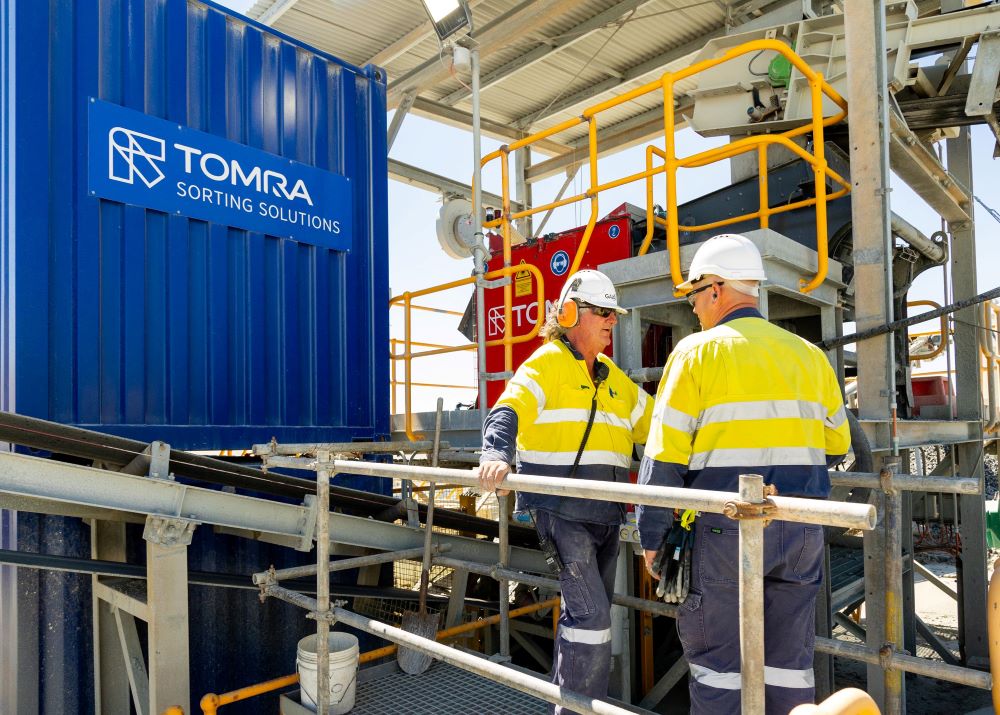Using the Tomra sorter for lithium ores


The global demand for lithium is soaring. Some forecasts project the demand to reach as much as 1.5 million tonnes of lithium carbonate equivalent by 2025 – triple what it was in 2021 – and over 3.0 million tonnes by 2030. Growing lithium demand comes with the challenge of extracting as much lithium ore from all mines as efficiently as possible, while meeting increasingly stringent environmental requirements.
The main challenge in lithium mining comes from basalt contamination. This high-iron, barren material has a high-density very similar to that of spodumene. It means that when dense media separation (DMS) is used as the primary spodumene concentration process, basalt is concentrated with spodumene, contaminating the final product.
The solution is available from Tomra Mining, which makes proven technologies to remove basalt contamination before crushing. That allows mining operations to consistently achieve the required grade of the product and expand their resources to include more iron- and basalt-contaminated orebodies.
How sensor-based ore sorting works
Tomra’s industry-leading sensor-based sorting solutions rely on colour cameras, X-ray transmission sensors, and multi-channel scanning lasers. The sensors analyze every single particle, identify the ore and waste in milliseconds, and high-speed air jets direct the particles accordingly to the product or waste chutes, processing at a capacity up to 350 t/h in a single sorter.
These high-speed sensor solutions are capable of sorting a wide size range – from around 6.0 mm to around 200. With these technologies, it is possible to minimize the unsorted fines that are discarded or stockpiled, and it has been extensively proven that they are effective in consistently reducing the contamination of the ore to less than 4%.
Operational efficiencies can be further improved with connectivity to the cloud-based subscription service Tomra Insight, which turns the sorters into connected devices that generate valuable process data. Mining operations are able to measure the contamination level in real-time, and hence the mining quality. They can also monitor the distribution of the particle sizes, and consequently the efficiency of the upstream crushing and screening equipment. Tomra Insight also gives visibility on the individual sorter’s availability and usage, helping to optimize the process. In addition, it enables the operator to accurately track any faults as they occur and improves the maintenance processes, so that the sorting plant is always operating at its best.
Tomra works in partnership with clients to develop the tailored solution that matches their requirements. Its solution perfectly integrates the sorting into the overall process stream, for seamless operation. The sorters are specified to match the capacity of the crushing and screening plant, and downstream wet processing plant, maximizing productivity.
Tomra’s close relationship with its clients continues after installation and commissioning of the sorting plant, to keep it operating at its best with tailored service agreements.
Visit www.TomraMining.com or follow Tomra Mining on Facebook @Tomra.Sorting.Mining, Twitter @TomraMining, LinkedIn at Tomra Mining and on YouTube at Tomra Mining.
Comments
Tafirenyika Tewe
I agree that Tomra solution is the best in mining industry. I’ve worked with Tomra XRT Sorters at three different mines mining different minerals. Their performances is par excellence.
1.Diamonds at Mbada Diamonds . Zimbabwe
2. Tungstern at RHA Tungsten
Zimbabwe
3.Lithium Zulu Lithium(Current). Zimbabwe